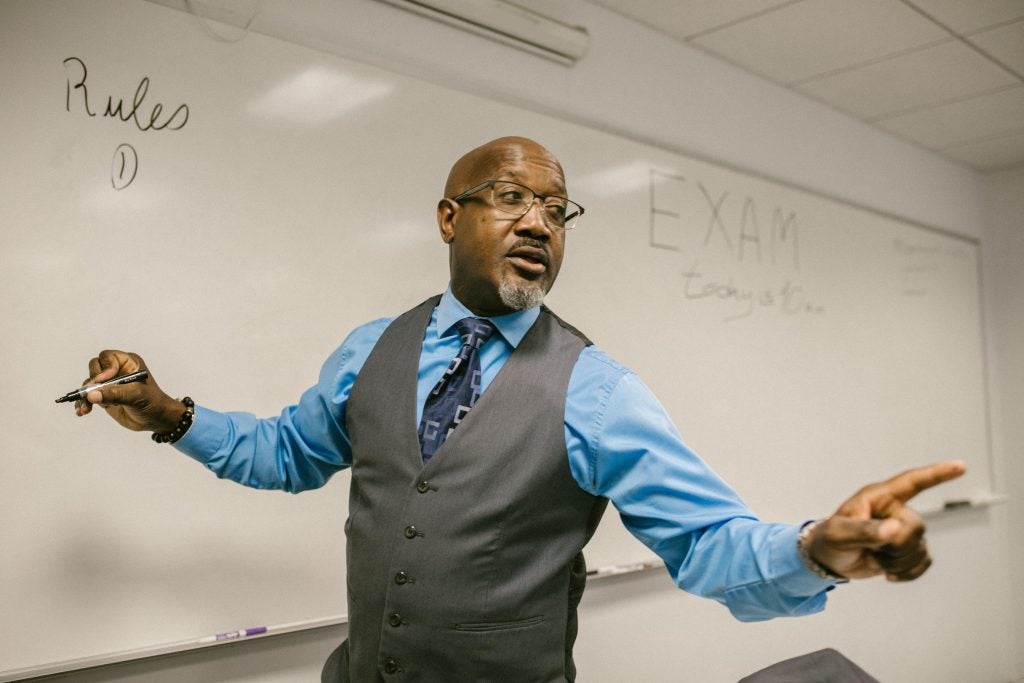Module 7: Communication (Part 2)
Dressing for Success
Introduction
Objective: The student will discuss how people communicate through their outward appearance and practice dressing for success in college and professional settings.Estimated time 30—45 minutes
Materials needed:
- Internet Access
Curriculum Link:
This section corresponds with Module 7 Activity 1 in the College Bound Transition curriculum resources.
Learn About It
Check out what college students are really wearing at the University of Washington.
People are defined by what’s inside, not by their outward appearances. However, outward appearances play an important part in communicating with others. Appearances can create first impressions. Appearances can also quickly send specific signals to many people at once.
Appearances can be deceiving. Strive to communicate clearly with your appearance.
Also, be willing to past others’ appearances when they don’t use this form of communication effectively.
Appearance as Signals

Parents Chime In
You may need to note that, for the purposes of this activity, we are using the term “physical appearance” to refer to how people personally dress and accessorize, their hygiene, their grooming, and other aspects of outward appearance that they have control over. We are not using this term to refer to people’s physical features that they cannot easily alter.
Thus, in discussing this activity, the emphasis should be on “making the most of what you have in order to send the messages you want to convey,” and not on “the more attractive you are, the better.” Because the topic of personal appearance can be a sensitive issue for some students, it may be beneficial to specifically point out this distinction and emphasize that dressing for success is not inherently tied to a person’s facial features, body type, weight, hair type, or other similar physical attributes.
The issue of what physical attributes society finds attractive and values is a separate one that is beyond the scope of this activity.
Outward Appearance

Using the Internet, find a picture of one person from the list below, then discuss your answers to the questions. You may also pick someone you know, such as family member or a friend.
- Politician
- Professor or teacher
- Actor or actress
- College graduate
- What type of clothing are they wearing? For example, would you describe it as casual, dressy, professional, or something else?
- Depending on the situation, do you think the person is dressed appropriately or socially acceptably? Why or why not?
- Does the person exhibit appropriate personal hygiene? Give an example of how you determined this.
- What message might it send if the person appeared unkempt?
Appearance and Communication
Communicating Through Outward Appearance in College
- College students use their outward appearances to communicate with peers, professors, employers, and many other people.
- College students need to be able to adjust their outward appearance to present themselves in different ways appropriate for a variety of situations, just as they use other forms of communication.
- Most colleges have no student dress code.
- Most college students dress primarily for comfort and personal style preferences.
To dress for success in college, you do not need to:
- Conform to specific styles or trends
- Suppress your self-expression
- Wear expensive clothing or accessories
- “Dress up” all the time
- Look picture-perfect every time you leave your doom room.
- Be clean and appropriately groomed
- Cover up enough to avoid indecency charges
- Dress appropriately for certain situations that require more formality
- Pay attention to the messages your appearance communicates to ensure these messages are what you want to convey.
Final Thoughts and Decisions
- Does the way you currently dress and present yourself elicit the type of reaction that you want?
- If the reactions you experience don’t meet your expectations, how can you get them back in sync?
- Appropriate male and female attire
- Clothing
- Eye Contact
- Facial Feedback
- Appearance
Parents Chime In
- Review and discuss with your student what they feel their outward appearance communicates to others.
- Encourage your student to practice dressing for success whenever he or she can: for example, when going out to dinner, attending an event, or interviewing for a job.
- If you see your student working on his or her appearance, offer encouragement.
- Share with your student your own personal struggles and achievements with dressing for success.
Objective Check
Have you accomplished today’s objective?
Objective: The student will discuss how people communicate through their outward appearance and practice dressing for success in college and professional settings.
If so, congratulations!
If you don’t feel like you’ve developed a balanced picture of college life, review all of the examples and the video that we have provided and use them to add to your “big picture.”
